All birds in the Antarctic region are seabirds, and except for flightless penguins, they are all flying birds. There are more than 30 species of birds that breed in Antarctica. Among them, only snow petrels are indigenous residents, and the others are expatriates from other countries.
The species of marine birds in the Antarctic region are rare, but the number is considerable, about 65 million. If penguins are included, the total number of seabirds is even more staggering, about 178 million. According to estimates by world-renowned seabird experts, there are about 1 billion seabirds in the world, and seabirds in the Antarctic region account for about 18% of the world's total seabirds. Back here, the Antarctic region can be called a paradise for birds.
1. Expatriates from other countries
There are 33 species of birds, alien immigrants in Antarctica, of which 23 species belong to albatrosses and petrels, and the rest are seagulls.
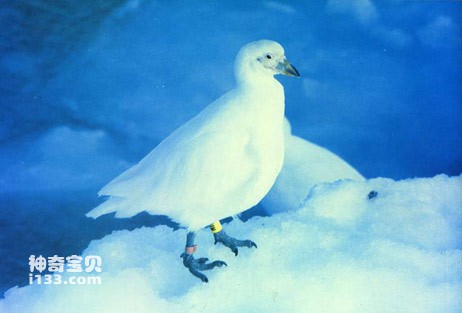
Sheath-billed Gull
Albatross species include wandering albatross, black-browed albatross, gray-headed albatross and light soot albatross. There are approximately 39 million albatross species.
There are 19 species of petrels, including Southern Giant Petrel, Northern Giant Petrel, Antarctic Petrel, Cape Petrel, Blue Petrel, Big-winged Petrel, White-headed Petrel, White-jawed Petrel, Wilson's Storm Petrel, Gray Petrel and Antarctic Black-backed Petrel, totaling about 11 million. Only.

Giant petrel
Others include Antarctic skua, great skua, great sheath-billed gull, lesser sheath-billed gull, Antarctic southern shearwater (hu), Antarctic fulmar and Antarctic green cormorant.
The largest flying bird in Antarctica is the wandering albatross, weighing 5 to 6 kilograms. It is also the largest flying bird in the world. Next is the southern giant petrel. The southern giant petrel and the northern giant petrel weigh about 4.5 kilograms, and the distance between their wing tips can reach 2.1 meters when flying. The smallest flying bird is the Wilson's storm petrel, which weighs only 36 grams, but it flies very fast and has strong wind resistance. It can fly in powerful storms, hence its name.
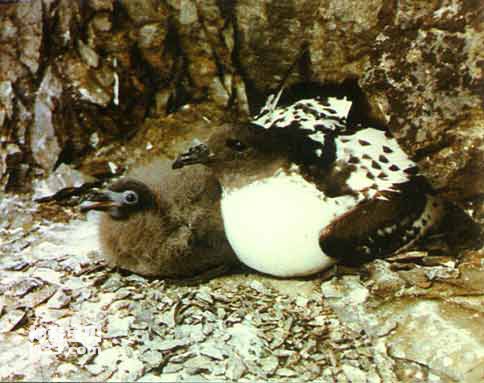
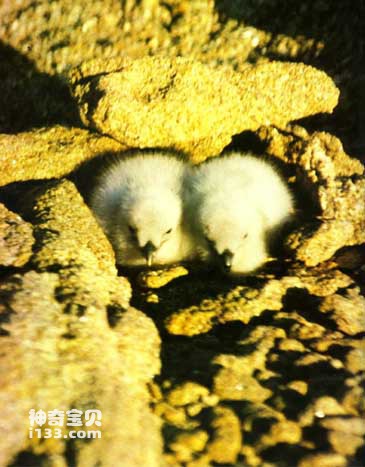
Antarctic pigeon
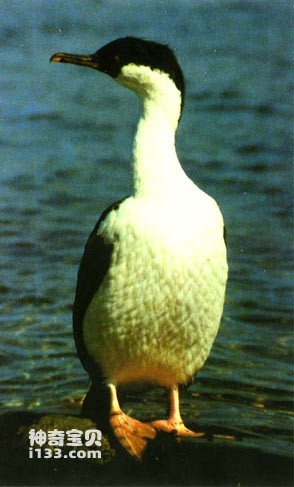
blue-eyed cormorant
These marine birds mainly feed on krill, but also eat turtles, fish and other marine organisms, and play an important role in the Southern Ocean marine ecosystem.
2. Antarctic petrel
Antarctic petrels are fulmarids. They have a common feature, which is that there is a nostril-shaped tube at the corner of the mouth, which is connected to the stomach. It is usually closed with a mucus-like paste and serves as a defensive weapon in emergencies. This habit of the Antarctic petrel is particularly obvious. When people approach it, it opens its mouth and stretches its neck, as if to express welcome. In fact, it is preparing "weapons" and issuing a warning: its sacred territory is inviolable. When people touch it or its children, it becomes furious, takes advantage of people's unpreparedness, and launches a sudden attack, spraying out the liquid in its stomach like a water gun, up to half a meter away. This liquid is oily, slightly orange-yellow, and has a fishy smell. It splashes on clothes and is difficult to remove for a while.
3. The King of Birds—Albatross
The Wandering Albatross is the largest flying bird in the Antarctic region and the king of flying birds in the world. It is covered in pure white feathers with black markings on its tail and wing tips. Its body is streamlined. When it spreads its wings and flies, the distance between the wing tips can reach 3.4 meters. The wandering albatross, known as the flying champion, is accustomed to traveling thousands of miles per day. It can fly for several days without getting tired, even flying around the poles with undiminished vigor. The Wandering Albatross is also an expert at gliding in the air. It can keep gliding for several hours without flapping its wings, relying only on the effect of airflow, looking very comfortable.
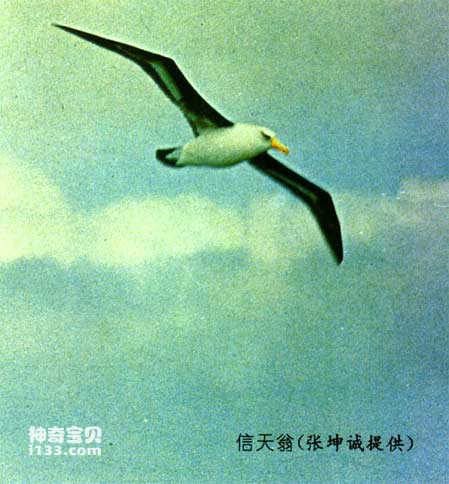
Albatross
The Wandering Albatross is praised by navigators as a lucky bird and a navigation bird. When ships sail on the roaring Southern Ocean, they can often be seen working tirelessly, darting, circling, and soaring to guide the ships. Chinese scientists encountered roaming albatross on their way to Antarctica. At first, people mistakenly thought that it was preying on fish and shrimps injured by ships. Later, it was discovered that it was not following the stern of the ship, nor did it show any predatory behavior. Instead, it kept circling and flying, sometimes high, sometimes low, sometimes far, sometimes close... The crew said this was the albatross "navigating". Low-altitude circling means there are icebergs or ice floes ahead, while flying high and forward means there is an open ocean ahead. However, the ship's ornithologists disagree with this statement. They believe that the navigation is false and the curiosity is true. The albatross has never or rarely seen people and ships, and out of curiosity and instinct, constantly chases ships.
4. Air Robbers
Among the Antarctic seagulls, there is a kind of brown seagull called the skua. From its name, you will know that it is probably not a good thing. Some people call it an air bandit, which is not an exaggeration at all. Although its appearance is not very ugly, with clean brown feathers, a thick black shiny beak, and bright round eyes, it gives people a disgusting feeling because of its habit of stealing and robbing.
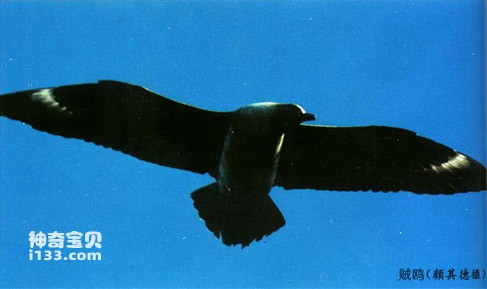
Skua
The gull is the enemy of penguins. During the breeding season of penguins, skuas often attack penguin habitats unexpectedly and eat penguin eggs and chicks, causing the birds to fly and break their eggs, making the neighbors uneasy.
The gull loves to eat, is lazy, and gets something for nothing. It never builds its own nest, but adopts domineering methods to seize the nests of other birds, disperse their families, and sometimes even viciously snatch food from the mouths of other birds and beasts. Once his belly was full, he crouched still and passed the time.
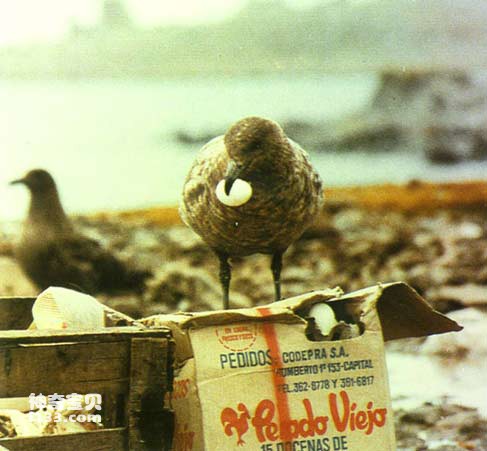
Steal eggs and eat them
The lazy skua is not very strict in its choice of food. It doesn't matter whether it is good or bad, as long as it can fill its stomach. In addition to fish, shrimp and other marine life, bird eggs, baby birds, seal carcasses and bird and animal feces are all its delicious meals. The leftover meals and garbage discarded by the expedition team can also become its delicacies. When it was hungry, it even got into the food bank of the research station, like a mouse, eating and drinking enough, and then grabbing a handful before leaving.
What's even more disgusting is that Fuou brings a lot of trouble to scientific investigators. During field trips, if you are not careful, the picnic food you bring with you will be snatched away by the gulls. When encountering this situation, people can only sigh in despair. When people unknowingly approach its nest, it attacks without hesitation, flying around overhead with its chirping, even swooping at people, grabbing, barking, and sometimes swooping at people. Shiting on the ground has the potential to drive away the expedition team members and destroy the scientific research station.
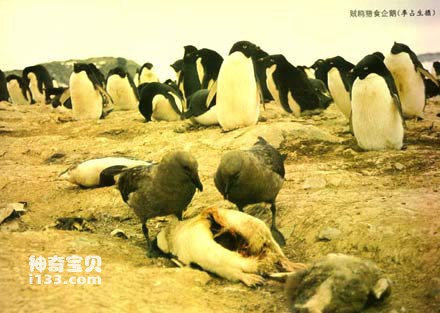
Thieves hunt penguins
The skua has a strong flying ability. Perhaps it is due to the long-term training of theft. It is said that the Antarctic skua can also fly to the North Pole and live there.
During the Antarctic winter, a small number of skuas overwinter on the southern subantarctic islands. One of its wintering grounds is around China's Antarctic Great Wall Station, where ice and snow are everywhere. Not only are the small patches of land exposed during the summer months covered in snow, but large swathes of the ocean are also frozen. At this time, Fu Ou's life was even more difficult. He had no nest to live in, no food to eat, and he could not fly far. He just stayed lazily near the research station and lived by eating the garbage on the station. People called him a voluntary cleaner.
animal tags:
We created this article in conjunction with AI technology, then made sure it was fact-checked and edited by a Animals Top editor.